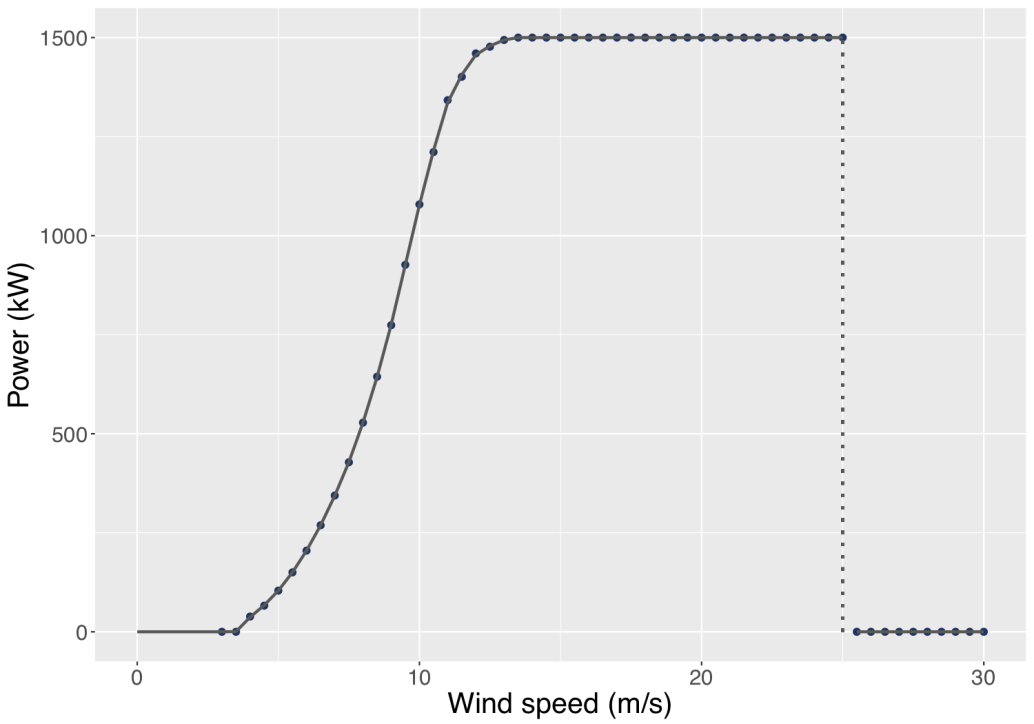Forecasting Wind Speeds
Renewable sources of energy such as wind power have become a sustainable alternative to fossil fuel-based energy. However, the uncertainty and fluctuation of the wind speed derived from its intermittent nature bring a great threat to the wind power production stability, and to the wind turbines themselves. A turbine cut-off point denotes how fast the turbine can go before turbine blades are brought to rest to prevent any damage produced by extreme wind speeds. The figure below shows a non-parametric estimate of a power curve mapping wind speed to wind power for the GE 1500 kW (model GE1.5 S) turbines installed in the border between Oregon and Washington, along the Columbia river. We are particularly interested in detecting when we will observe wind speeds that can potentially harm the wind turbine, i.e., wind speeds close to the cut-off point of 25 m/s.

Although a lot of work has been done on developing models to forecast average wind speed values, surprisingly little has focused on proposing models to accurately forecast extreme wind speeds. In this project, we develop a flexible spliced Gamma-Generalized Pareto model to forecast extreme and non-extreme wind speeds simultaneously. Our model belongs to the class of latent Gaussian models, for which inference is conveniently performed based on the integrated nested Laplace approximation method (INLA).


